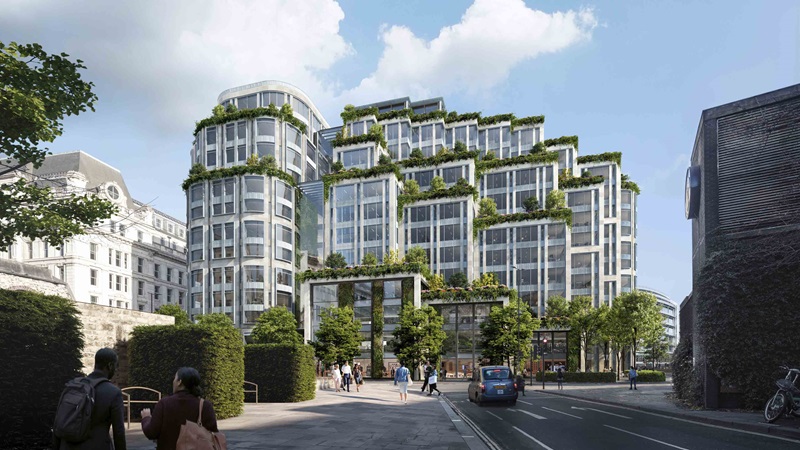Now is the time to upgrade city offices
The death of the office proclaimed post-pandemic is far from real; what’s true is that London still lacks good quality office spaces. HSBC’s change of location is proof of that, writes Gareth Lewis.
The news that HSBC is negotiating a new lease on the former BT Headquarters at 81 Newgate, near St Pauls Cathedral, is yet another example of the urgent need to retrofit London’s office space.
The negotiations mark the banking giant’s intent to move its world headquarters away from the 45-storey tower in Canary Wharf – where it has been based for over two decades – to an office block that Mace is currently bringing up to modern standards.
The City of London space, at 81 Newgate Street, is representative of a blossoming part of the construction industry – namely, the modernising of existing commercial office space. It wasn’t that long ago when City types were predicting the death of the office. But, it is becoming clear that the problem we now face is simply a lack of quality office space. And the authorities agree.
Last week the City of London Corporation predicted they will need up to 20m sq ft of office space in the Square Mile by 2042. They reported that city workers are mostly back at the office on a regular basis, particularly mid-week, with latest estimates showing that we’re now at 80 per cent of 2019 levels Tuesday to Thursday. This trend is expected to continue to rise.
The City Corporation reported a “flight to quality” amongst tenants who are seeking best-in-class office space with the highest sustainability credentials, quality design, and a good provision of meeting spaces. They also anticipate a high proportion of the city’s existing office stock will require investment to meet new energy efficiency regulations, and they recommend interventions to reduce obstacles for older stock to be updated to meet market needs or to convert for other uses. There are ageing City office buildings with poor energy efficiency, elevators frequently out of use, substandard design and layout, poor lighting and with little access to fresh air. As the cliche goes, the purpose of offices has indelibly changed. It isn’t simply a place for staff to sit in and tap away at their computers all day; it is a representation of the company, and no one wants to be remembered for blue carpets and fluorescent lighting.
Mace recently published our Transform and Renew report in which we revealed that we anticipate 87 per cent of non-residential buildings will need upgrading in some way by 2030 to meet the government’s proposed energy efficiency requirements. Under the proposals, if leased commercial properties don’t have an Energy Performance Certificate (EPC) of B by 2030, they will be unlettable making them “stranded assets”. More urgently, as of April 2023 offices will need to have an EPC of E if they wish to renew their lease, and this will be ratcheted up to EPC C by 2027.
There remains a small window of opportunity for city landlords to upgrade their offices and keep the next HSBC from fleeing their headquarters. Some of this work has already begun. According to the Deloitte Crane Survey for Summer 2023 there was the highest number of London office refurbishments since the survey began in 2005.
But the sector needs much greater certainty around energy efficiency targets, which will almost undoubtedly become increasingly important to office buildings. The government has consulted on proposals for changes to EPC targets, but there has been no response since then. Any potential legislation would likely impact more than a million properties, landlords and developers. So you can see the conundrum. Cities need their buildings redone, but who would pay to do that now, if there’s a chance it will need to be refurbished all over again in less than a decade?
Workers no longer want to commute into London to work in sub-standard offices. They want high-quality, energy efficient and accessible spaces. Developers that can provide this will be able to claim a premium, those who don’t will be left behind.
This article was first published in City AM.











